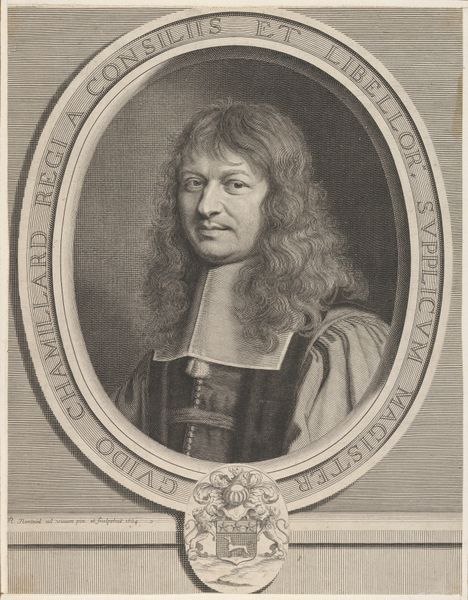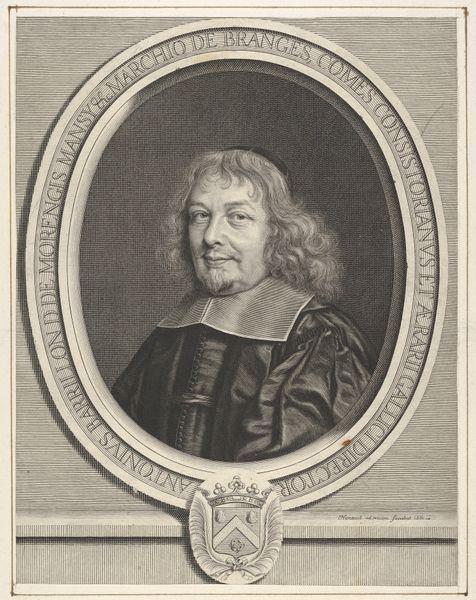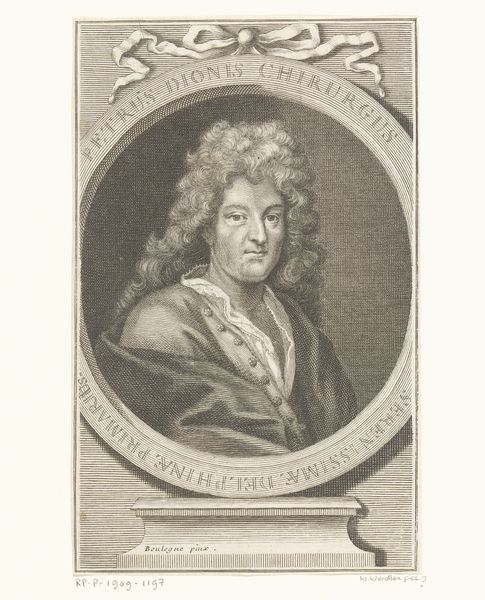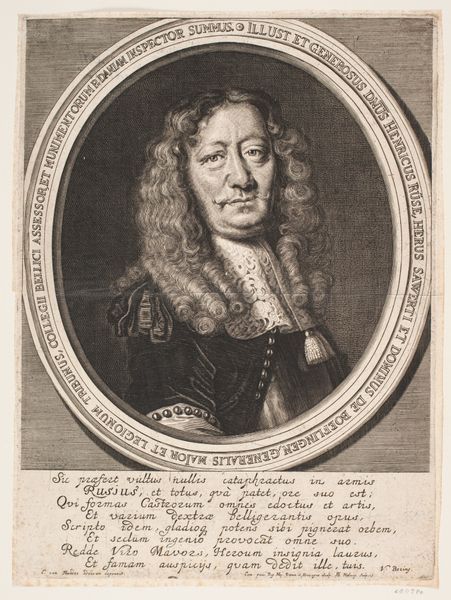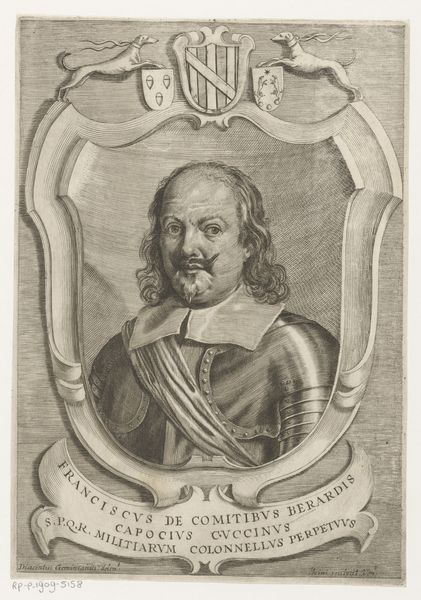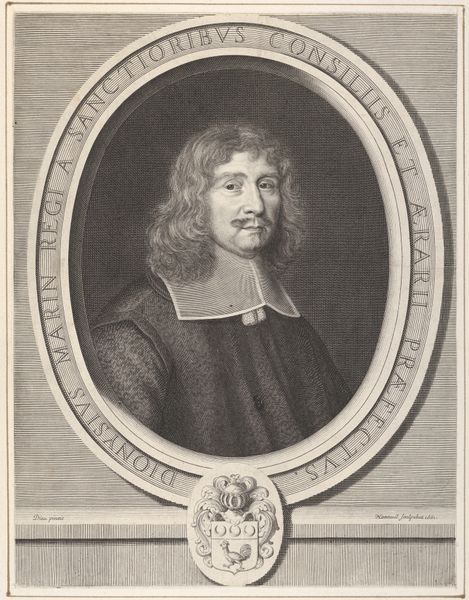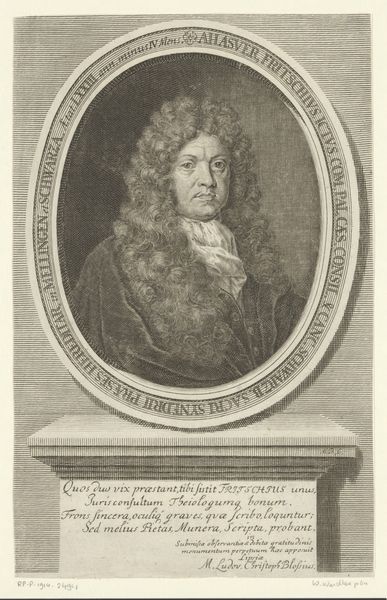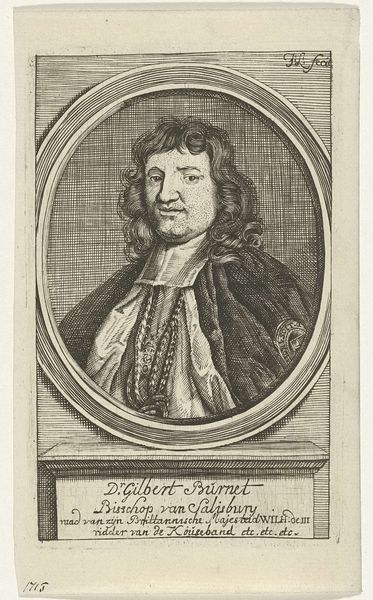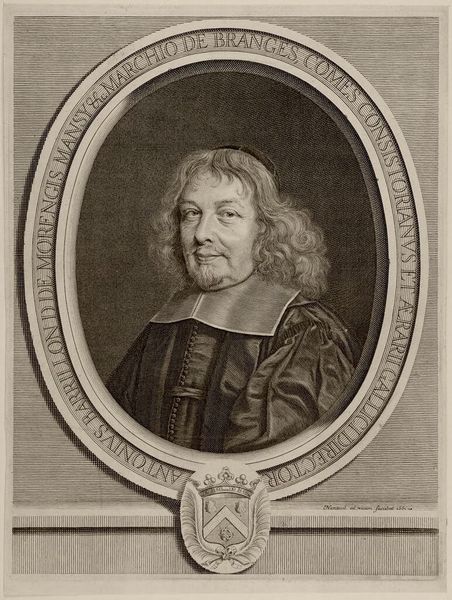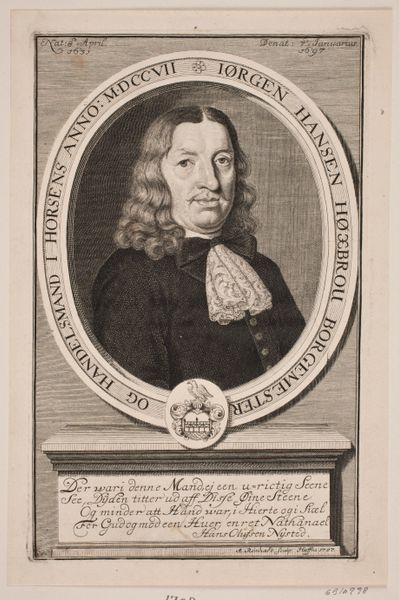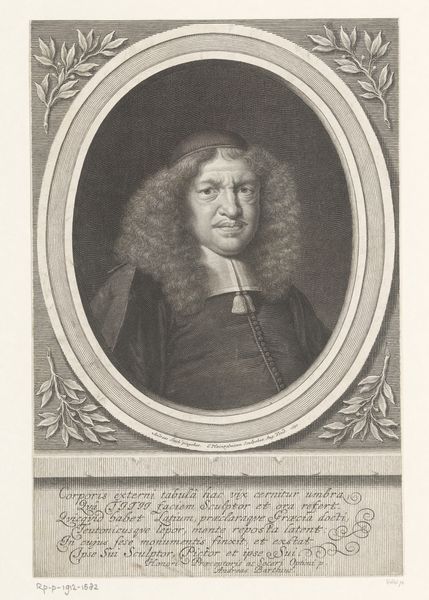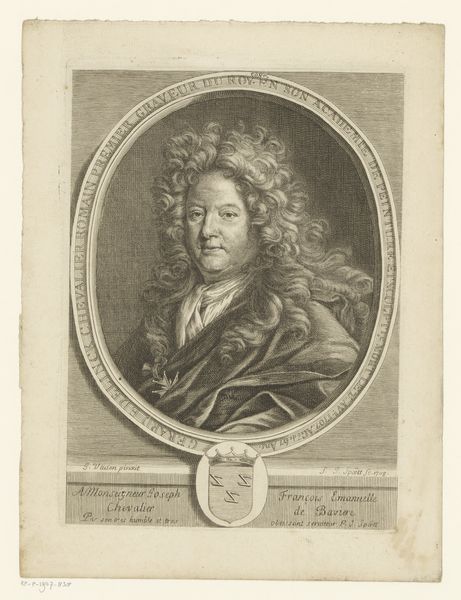
drawing, print, metal, engraving
#
portrait
#
drawing
#
baroque
# print
#
metal
#
form
#
men
#
line
#
portrait drawing
#
engraving
Dimensions: sheet: 7 13/16 x 5 1/4 in. (19.9 x 13.3 cm)
Copyright: Public Domain
Curator: Claude Mellan produced this engraving, a portrait of Louis Berryer, in 1667. You can currently find it at the Metropolitan Museum of Art. Editor: The most immediate thing I notice is the absolute *mastery* of line in this engraving. Look at the way he suggests volume and form using nothing but lines of varying thickness and proximity. Curator: It's incredible, isn't it? The sheer technical skill required to execute this – engraving lines into a metal plate, each one permanent – speaks to the immense labor and artistry involved in printmaking at this time. Consider the socio-economic implications. Prints like these facilitated the dissemination of images, offering a mass-produced likeness that, until then, only painted portraits could fulfill, but at a considerable difference in cost. Editor: And the portrait itself becomes a symbol, a codified representation of Berryer’s status. The oval frame, the Latin inscription, the coat of arms – it's all visual language meant to convey authority and importance. Berryer was clearly someone who wielded influence. Curator: Exactly. Mellan uses line to construct not just Berryer’s physical appearance but his social identity, highlighting the constructed nature of image and self-representation in the 17th century. This was a society becoming more obsessed with optics and the visual display of power and wealth. Editor: Even the clothing becomes symbolic: the ornate lace collar representing both refinement, wealth and social standing, positioned perfectly at the converging focal point between facial expression and familial coat of arms. One has to imagine the artist's conscious choice here to use these symbols to create this perception. Curator: So, the symbolic weight combines with the technical complexity of the print to enhance status not only for the depicted subject, but to show the prowess of the craftsman and make prints themselves become signifiers of cultural capital. Editor: And the choice of engraving suggests something durable, enduring; these aren’t fleeting images but deliberately designed to live on in collective memory. It provides visual form to power through the lens of individual and cultural symbol. Curator: Mellan’s focus was how the means of representation served those in positions of authority. I appreciate you pointing out its symbolic framework. Editor: Yes, it’s how we ensure his status transcends simply material production and enters historical understanding, no?
Comments
No comments
Be the first to comment and join the conversation on the ultimate creative platform.
